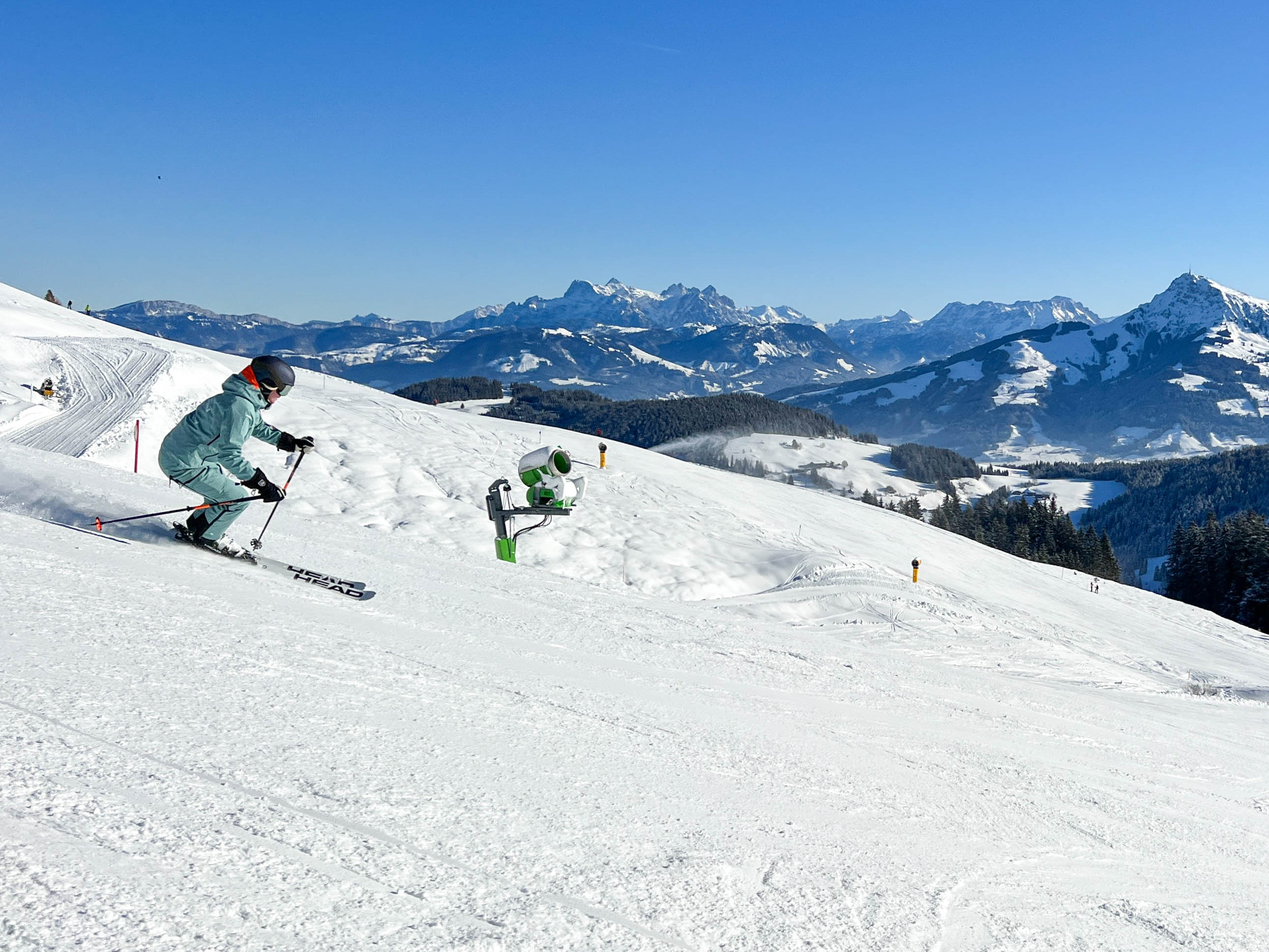

So, you've got a handle on turning and you're feeling confident about your pizza stops. Does that mean you're ready to tackle a red piste? Actually, what exactly is a red piste, anyway? In this guide we'll delve into the different piste markings and explain what's behind those enigmatic difficulty ratings. One thing to keep in mind is that piste ratings are always a little bit subjective, and they can change from resort to resort. Piste difficulty is also heavily dependent on snow conditions. A piste may be marked blue, but if conditions are icy then it may feel more like a red. Likewise, a black piste may be accessible to intermediate skiers on a powder day with soft, forgiving snow.
How are pistes marked in a ski area?
Broadly speaking, pistes are assigned colours in order to tell you if a piste is easy, medium or difficult (or really difficult, as with double black diamond runs in North America). The difficulty level depends on various factors including how steep the slope is, whether it is groomed or whether it's got moguls, whether it has obstacles such as trees or rocks, whether it has narrow bits or parts that are hard to navigate... you get the picture. In addition to a colour, slopes will also have a name and/or number. This is to help you not get lost - and sometimes the name will give you a hint of what's ahead. Piste markers on the side of the slopes will help you stay in-bounds.

Green pistes
In German-speaking countries, a green sign usually indicates a very flat, easy nursery slope. In France and North America, any slope that's suitable for beginners can qualify as a green slope. This includes long valley runs that can go on for several kilometres, as long as they're fairly easy. Green slopes are perfect for practising turns and building confidence. L'Alpe d'Huez in France has a plethora of green slopes for beginners.
Blue pistes
Blue slopes are best-suited to intermediate skiers. In Europe, blue slopes are usually cruisers that are perfect for honing your skiing technique or carving your way down at the speed of light. You'll see all manner of people on these slopes, from beginners to families and even advanced skiers who want to blow off some steam. Over in North America, blue slopes might be ungroomed and have a few obstacles like trees or small moguls. Ski resorts with lots of blue slopes include Winterberg (Germany), Tiroler Zugspitze Arena (Austria) and Alta Badia (Italy).
Red pistes
By the time you tackle a red piste, you should have a solid grasp on turning on all snow conditions. Technically aimed at intermediate skiers, red pistes can be quite steep and are not suitable for beginners. They're a good place to perfect your carving technique or practise short turns for steeper slopes. Red pistes don't exist in North America - what would be a red piste in Europe is usually considered a black diamond run, or perhaps a difficult blue run. Alpine ski areas with a healthy selection of red pistes include Saalbach (Austria), Oberstdorf (Germany) and Val Gardena (Italy).
Black pistes
Black pistes are for advanced and expert skiers and snowboarders only - no beginners allowed! Not only are they very steep, black pistes will often also have features like waist-high moguls or tricky narrow bits that require special skills to navigate. To successfully tackle a black piste you'll have to have a handle on your centre of gravity and be a master at short turns. In North America, black pistes are divided into two categories. A single black diamond indicates a steep slope that might have moguls or trees, and a double black diamond is used for extremely difficult pistes that involve chutes, couloirs, cornices or other extreme features. Ski resorts in the Alps that are known for their black pistes include Davos-Klosters (Switzerland), Andermatt (Switzerland) and St. Anton (Switzerland).
Ski routes
You'll often see ski routes marked as yellow slopes or indicated with a red dashed line in the piste map. Ski touring is increasingly popular in the Alps and many ski resorts are starting to develop these trails which are marked and secured, but not groomed. In contrast with off-piste skiing, marked ski routes can usually be used without a ski guide since the hazards have been controlled. But you should still exercise caution when skiing or boarding on these trails, since they might suddenly land you in deep snow with no warning. Therefore, they're only really suitable for people who feel comfortable skiing or snowboarding in all conditions and various types of terrian. Davos-Klosters (Switzerland), Fieberbrunn (Austria) and Zermatt (Switzerland) are known for their ski touring routes.

Skiing off-piste
Powder hounds who live for fresh tracks will know all about the joys of skiing off-piste. Ungroomed slopes present a set of challenges and thrills that are hard to beat, and they're the dream of many skiers and snowboarders. But before you go off-piste, you'd be wise to remember that the terrain you're about to enter is neither marked nor secured. By skiing off-piste, you're acting at your own risk - and this is reflected in many travel insurance policies, who won't cover you if you get into an accident off-piste. You'll generally know you're exiting the controlled ski area because a sign will alert you to the danger of avalanches. Anyone skiing off-piste should be properly equipped and well-versed in avalanche preparedness. If it's your first time in a certain region, hire a guide to show you the best powder stashes and help you steer clear of hazards.
















